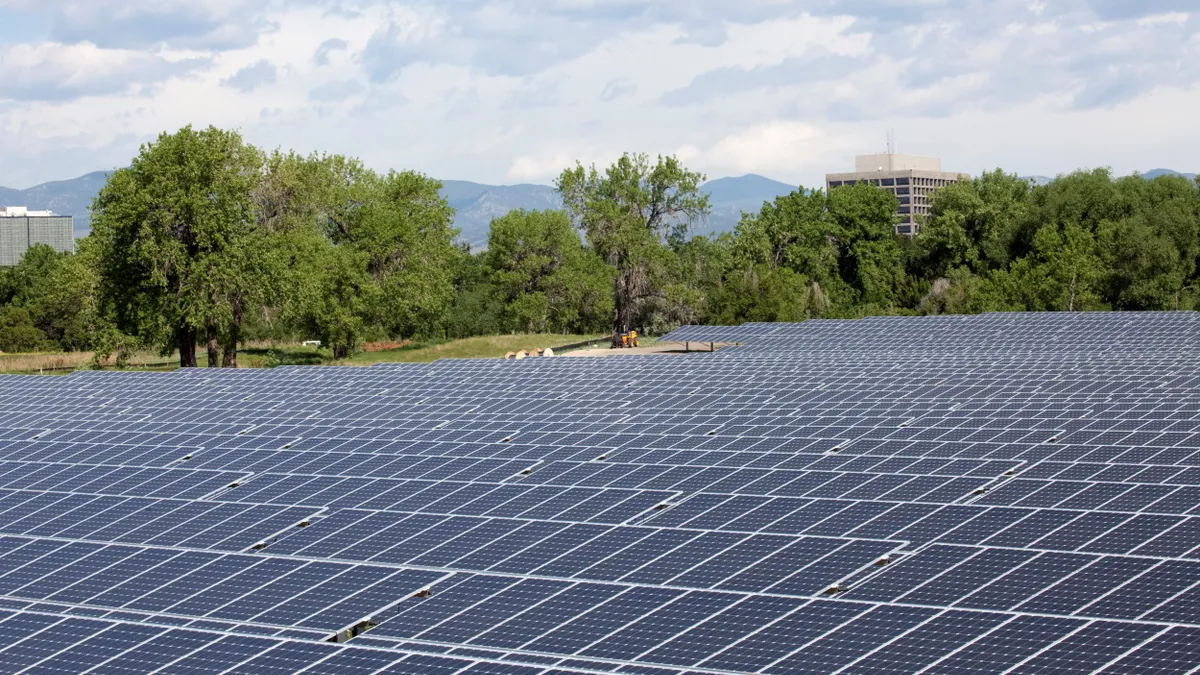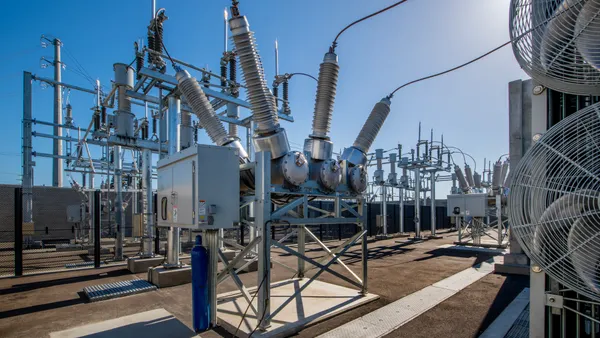Dive Brief:
- GTM Research predicts 2015 will be a "transcendent year" for solar, with 55 gigawatts expected to be installed globally.
- The figure represents a 36% growth of the solar market over 2014, which GTM called a "transitional year, according to its new report, "Global PV Demand Outlook 2015-2020: Exploring Risk in Downstream Solar Markets."
- The U.S. will be the third-largest solar market in the world in 2015, according to the research unit, behind China and Japan. The U.S. is projected to install 8 gigawatts this year.

Dive Insight:
While the global solar market has largely been characterized by boom-and-bust cycles based on regional policies thus far, GTM Research believes those days are mostly over. "[W]ith costs continuing to fall, we’re entering a new era of economic competitiveness in which solar PV will be increasingly market-based," GTM reports.
The reality is that solar has become competitive far faster than many imagined just a few years ago.
"Our core thesis is that solar is poised for exponential growth that will help it account for roughly half of new capacity out to 2020,” Solar Analyst Adam James, author of the report, told Greentech Media. “While solar demand will grow almost everywhere, there are a few key drivers that will be particularly significant, including unprecedented demand in emerging markets, the evolution of grid parity in Europe, and massive headroom in developing countries such as China and India."
There is growing demand in emerging markets, such as Latin America, Africa, and the Middle East, according to James. These markets are projects to grow from 1% of global demand to 17% by 2020. The world's biggest market is China — which is projected to nearly double its solar capacity to 30 gigawatts in 2015, largely as a result of its feed-in tariff programs and solar goals, according to James.
Back stateside, the U.S. solar market is expected to continue steadily growing. While utility-scale installations have dominated the U.S. market landscape until now, the rapid growth of the distributed residential market has caused significant concerns for utilities as it eats away at existing utility revenue models. There is a lot of utility-scale solar planned for this year and next, but GTM Research expects there to be a "cliff" in 2017, when the 30% federal investment tax credit steps down to 10%, according to GTM Research SVP Shayle Kann. Expected revisions of utility rate structures in the coming years may also impede the rampant growth seen thus far in the residential sector.















